Customer Services
Copyright © 2025 Desertcart Holdings Limited
Desert Online General Trading LLC
Dubai, United Arab Emirates
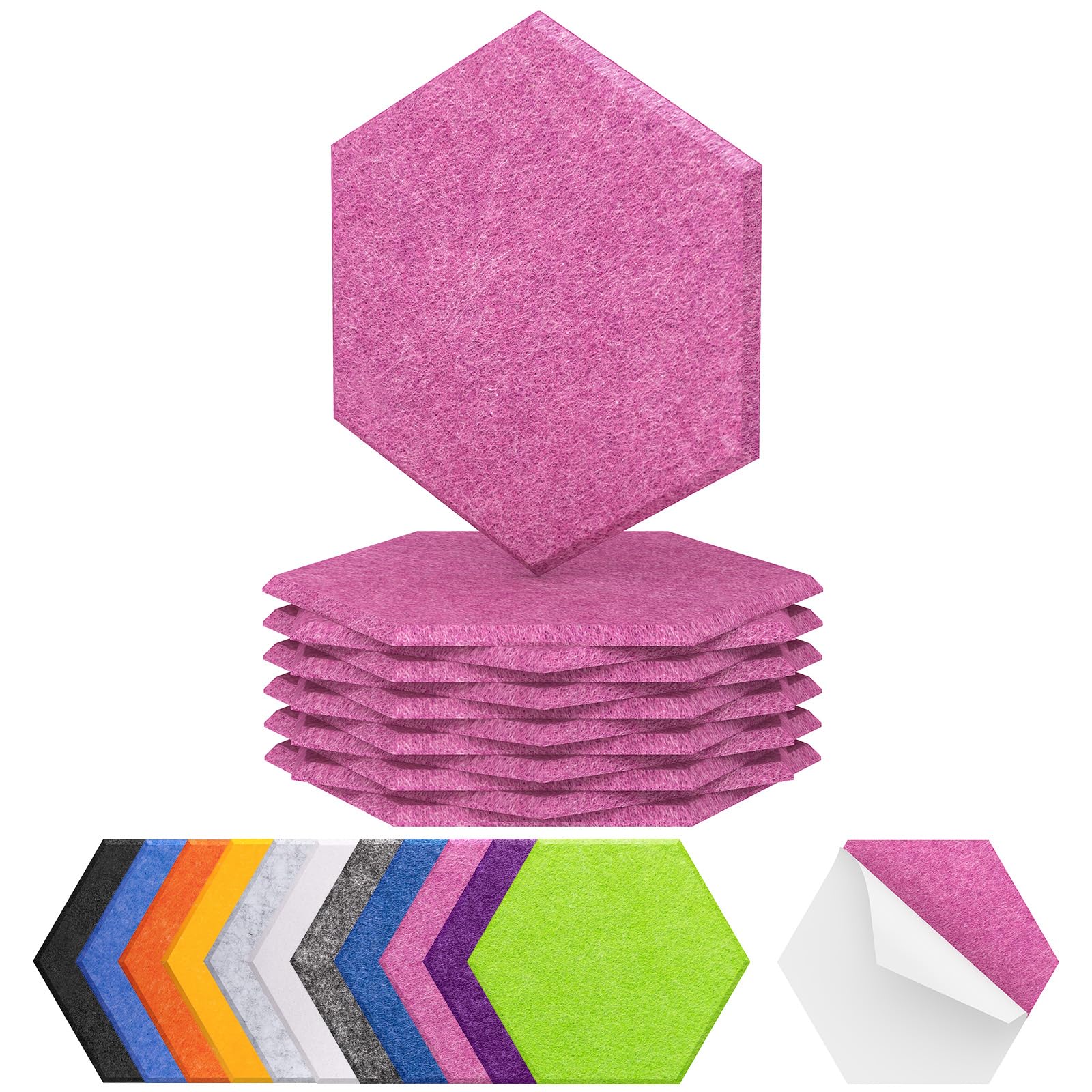

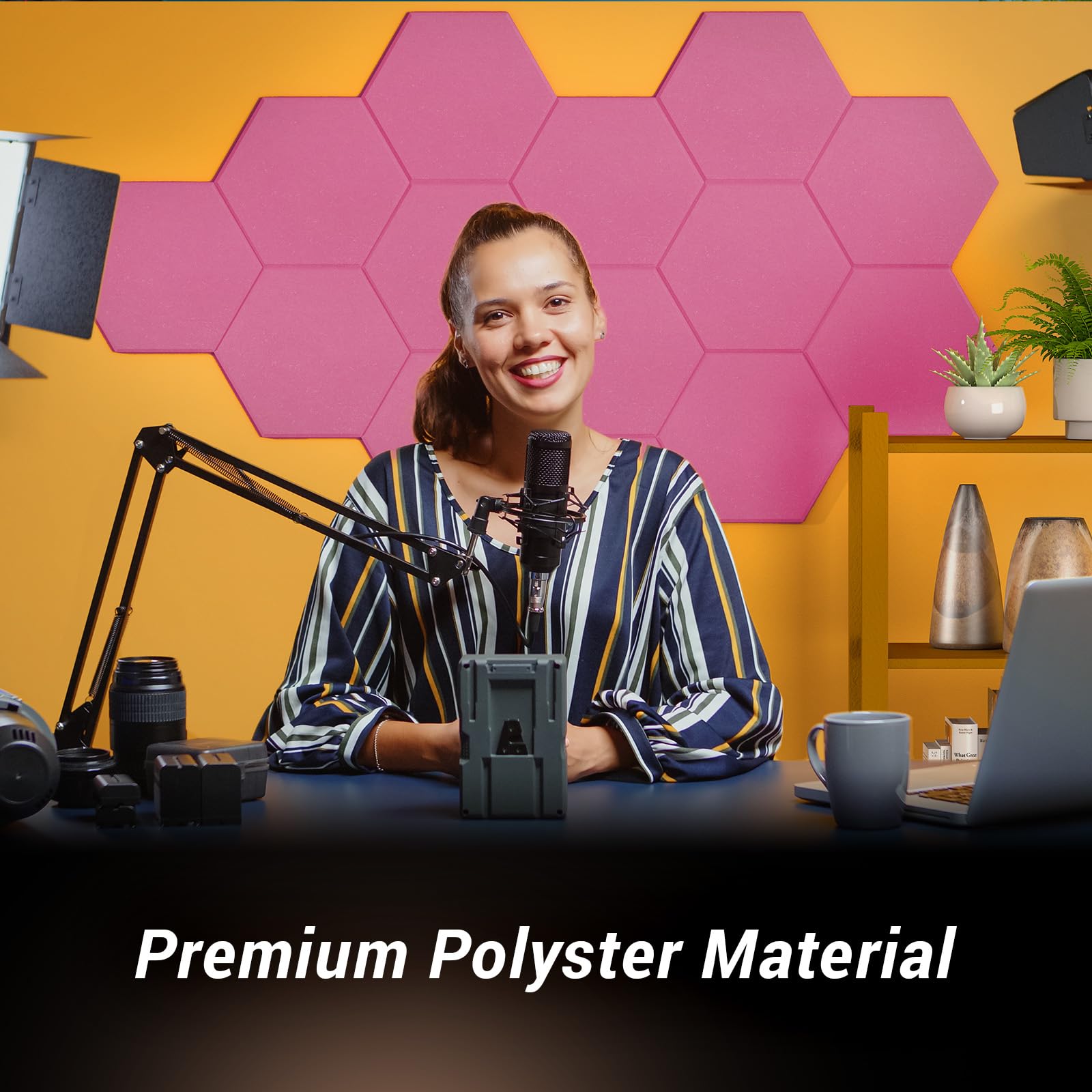
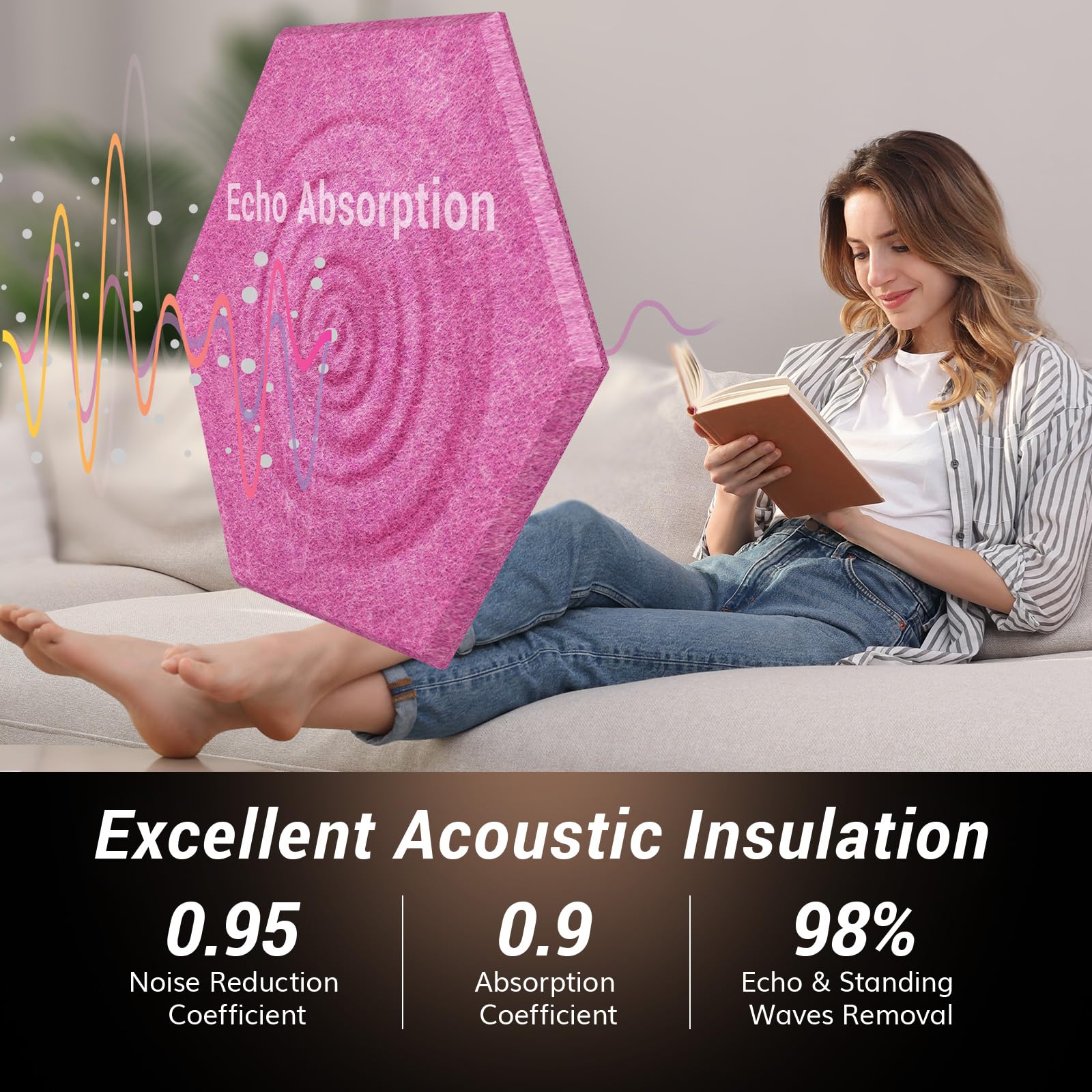
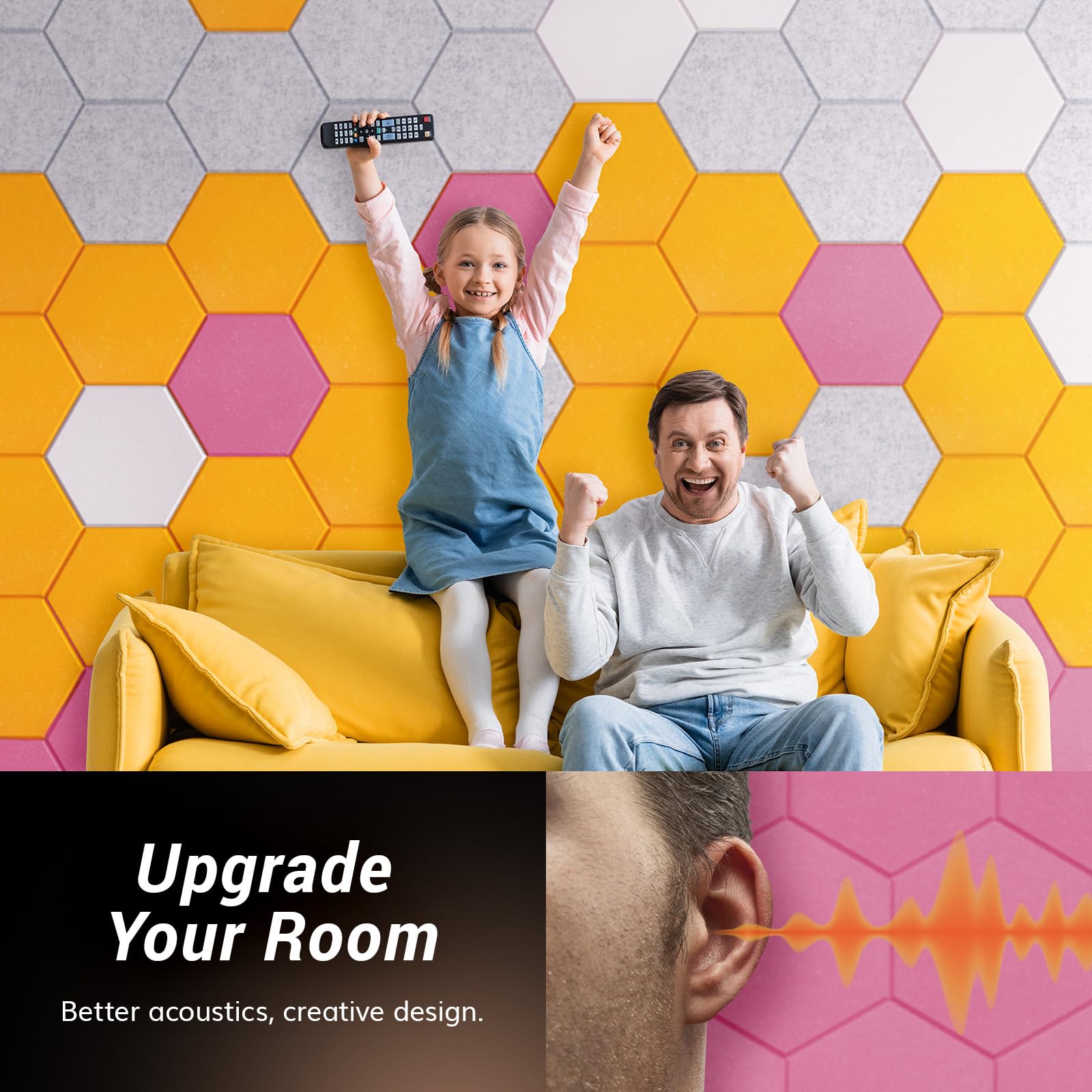
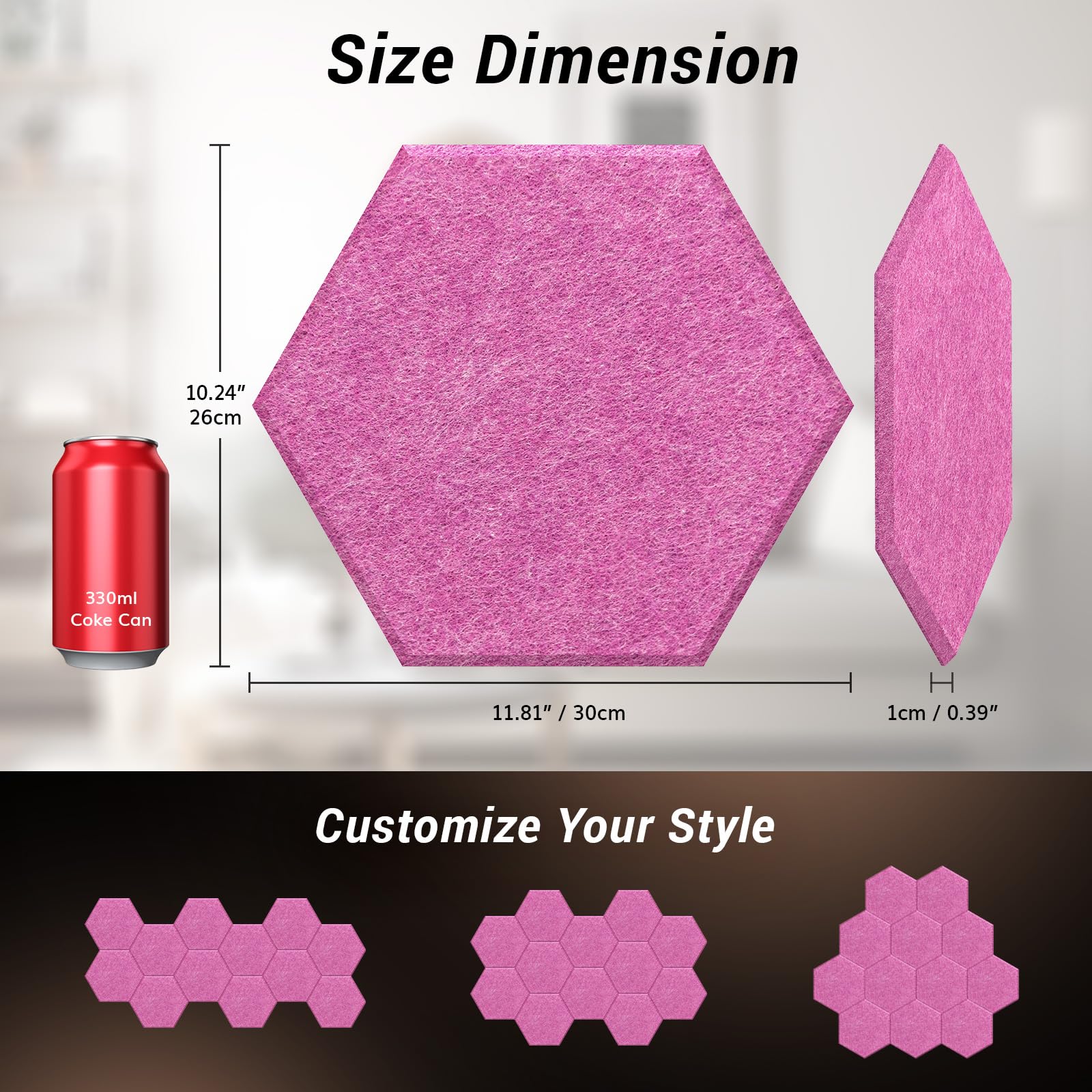

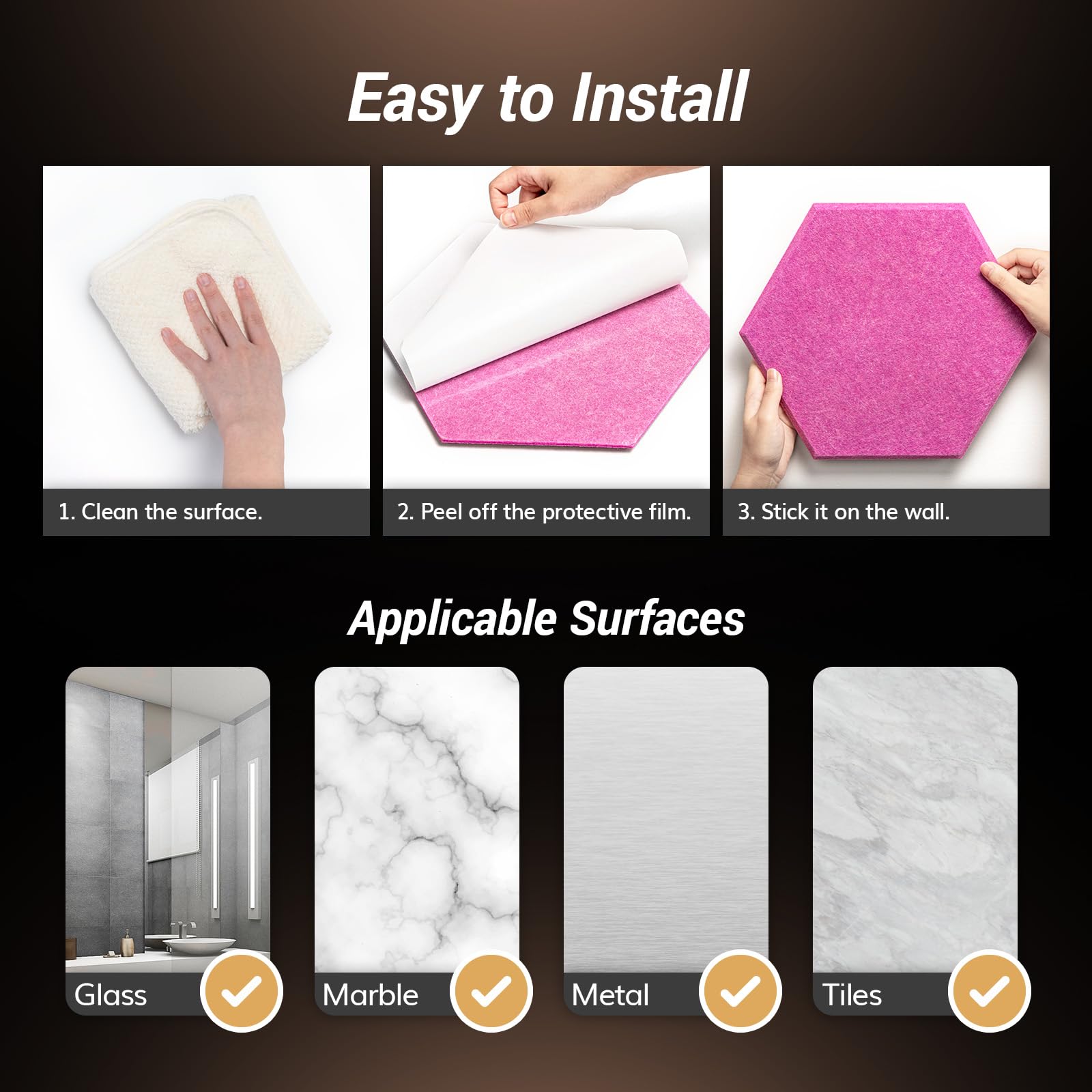
🔇 Silence never looked this stylish.
The TONOR 12 Pack Hexagon Acoustic Panels are high-density (1700g/m²) soundproofing panels measuring 12"x10"x0.4" with a 0.9 NRC rating, reducing noise by up to 90% and echoes by 97%. Made from 100% waterproof, odorless polyester fiber, these self-adhesive panels install easily on smooth surfaces and feature a trendy hexagonal design, ideal for studios, offices, and home environments seeking premium sound dampening with a modern aesthetic.

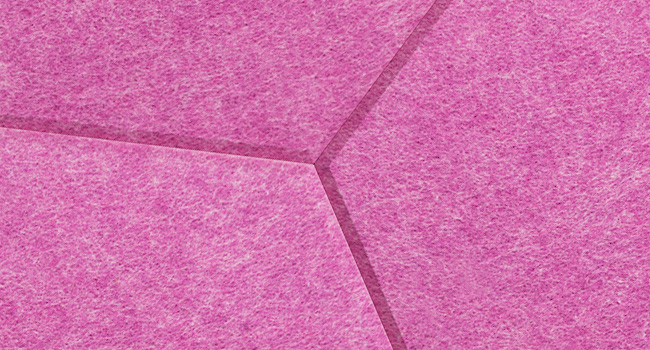
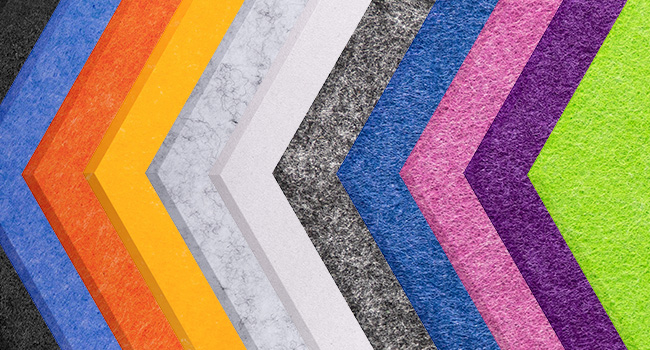
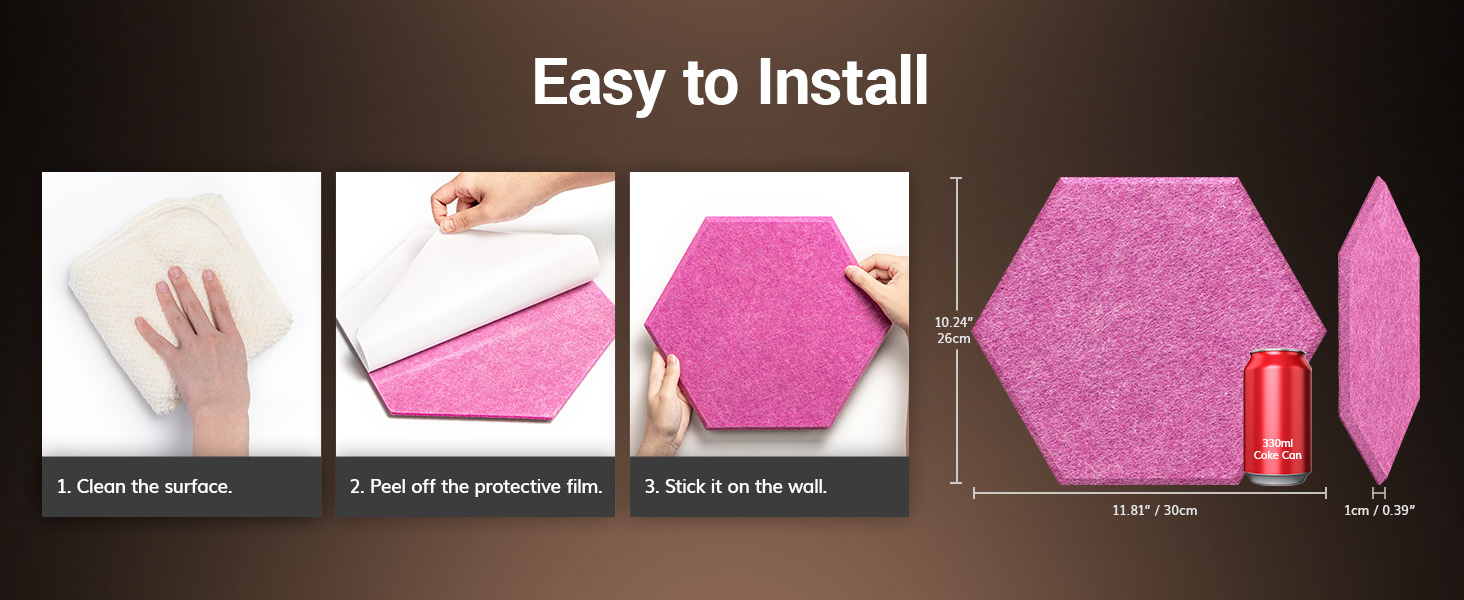
F**K
No more echo and they look good
My office is basically a box and it has a terrible echo problem. I bought a couple boxes of these and put them around the room in a way that would look nice and be functional without just being a big splotch of acoustic panels on the wall. They work great, the echo is gone. And they look great, I get compliments on them frequently.
C**O
Great Product!
Great product! I was impressed with the panels. Looks and felt great. Not sure how it is going to work with noise reduction. Very easy to install. Please note: the adhesive is very strong, once it’s place it’s VERY difficult to remove. Make sure you get it correct the first time. Considering buying more to complete the entire wall?!?!? Overall, definitely satisfied!
J**N
Perfect for Soundproofing
I used the TONOR Acoustic Panels in my kids' room, and they’ve made a huge difference in reducing noise. The self-adhesive panels were easy to install, and now the room feels quieter, with much less sound traveling. It’s perfect for soundproofing a room next to the playroom!
A**K
Work great, look great.
These work well to significantly reduce the sound penetrating the wall behind my television. I didn't go so far as to take readings, but I can say the difference is definitely noticeable. They also look great behind the television. I was concerned how they might detract from the effects of the addressable backlight I have installed, but once in place, I personally feel like it looks even better. 5 stars.
A**U
I'm happy with them
More for art value then acoustic sound deaden. But did work for some sound reflection and minimal sound deaden .
S**Y
Not bad, but not great
They work, but the adhesive is not the greatest. Will fall off consistently.
S**O
Sound Control with Style — Effective, Easy, and Surprisingly Tidy
Hello Amazonians! Sean "The Tester" Chao here, back with another review for you! Today I am reviewing Self-adhesive Hexagon Acoustic Panels 12 Pack, TONOR 12"x 10"x 0.4" High Density Sound Proof Panels Tiles for Walls, Absorbing Noise and Eliminating Echoes Acoustic Foam for Home Studio OrangeFunctionality: These panels noticeably reduced mid‑range echo in my small home office and streaming corner. The hexagon pattern breaks up reflections well and speech clarity improved during calls and recordings. With the self‑adhesive backing installation was fast—peel, stick, and reposition within a short window—so I was able to test different layouts quickly.Durability: The 100% polyester fiber feels dense and resilient; edges held up when handling and the panels didn’t slump or shed fibers during mounting. After several weeks mounted the adhesive remained secure on painted drywall and a smooth wooden panel with no lifting. They’re washable to a degree (light surface vacuuming or spot wipe) and showed no odor or discoloration after initial use.Aesthetics: The honeycomb hexagon tiles look intentional rather than industrial. The orange color popped in a tasteful way and added personality to my streaming backdrop without being distracting. The low 0.4" thickness keeps the profile slim while still delivering acoustic benefit—clean, modern, and decor‑friendly.Final Verdict: A practical, attractive acoustic kit for small rooms, content creators, and anyone who wants quick echo control without permanent construction. Effective at taming reflections, easy to install, and visually appealing—great for bedrooms, offices, or hobby studios. This Product Earns the Sean Seal of Approval!
C**.
A brief study of acoustic panels
I've been testing various kinds of sound proofing for my small home studio. My test included this product. In testing I used a Real Time Frequency analyzer along with an RTA microphone and a pink noise generator. I've tested various products that included this one so this will be a review of the various types of panels and which ones were the most effective.First thing to know is that while you can typically dampen sound with walls panels being able to say you have "sound proofed" them is a stretch. NONE of the products I've tested will completely sound proof a room. To truly sound proof a room requires more than just adding certain kinds of acoustic treatment to your walls. Sound proofing begins with how the wall it actually built and acoustic panels are a part of the entire package that it takes to sound proof a room.What acoustic panels WILL do for you is dampen sound with different types of panels doing a better job at different frequencies. This review will describe in general how well different panels perform and which characteristics indicate better performance.So, I've tested multiple types of panels and the ones that perform the best have several things on common. First off the better performing panels are ones that are thicker. In fact, for overall sound dampening the thicker the better. I tested panels that were anywhere from 1/8 inch think up to several inches thick and thicker was always better across all frequencies. Thinner panels were able to deal with higher frequencies fairly well but didn't help as much on lower frequencies. Almost all the panels did well as far as reflection of sound went but here again the thicker ones performed better than the thinner ones. The type of material, while some were slightly better than others, didn't seem to have as much of an influence as the over all thickness of the panels.The second most influential was the texture or "shape" of the outward facing part of the panel. Some panels had pyramid shapes, some had brick type shapes and some had no "shapes" to them at all. Over all the pyramid shapes were far ahead of other any other panel. The embossed brick shapes came in second and the panels with no shapes on them coming in last. Here again, a thicker "smooth" panel generally did better than a thinner embossed or pyramid shaped texture. However, a thinner panel with the Pyramid shaped on their outward service once again out performed a thicker one that wasn't shaped. However, once a panel reached over an inch of thickness the effectiveness of the shape or texture of the panel began to be less important.Lastly the type of material was taken into account. A good thick "foam" type panel out performed pretty much everything and was the most effective on lower frequencies AND did a great job with higher frequencies. Thinner foam panels lost a lot of their ability to deal with lower frequencies but still did a good job with higher frequencies especially if they were textured.In general most of the panels that I've tested did a pretty good job on higher frequencies. Foam types were again better here but the difference between those and more of a fiber type material was not a whole lot different. Again, those panels with some sort of shape on them were slightly better than ones that did not.With all that said there are a lot of other factors to consider. Placement of the panels being the main one. Taking the time to study your room, walk around it and listen to the difference in different areas of the room will give you a lot of information about where to place your panels. However, you can still choose more decorative styles of panels and place them where you think they'll look the best and still have some positive results. My testing was all done to improve my home studio and some of the panels tested were nice enough that they could be used as decorative pieces and still help with the acoustics of your room. NONE of the acoustic panels I tested just completely failed. In fact, I was a little surprised at how the thinner panels did over all. They were almost equally effective at higher frequencies the main difference being that the pyramid shapes out performed everything across the entire spectrum.Any panel you buy is going to make some sort of difference and the more of the panels you can put up the better off you're going to be. Choose a panel that looks nice for places where it will be seen and you can supplement them with thicker ones in places that are not quite so obvious to look at. My only big recommendation is that any acoustic treatment you use should include some thicker panels to help contain lower frequencies.I hope this all helps. This has been a fun and educational experience for me and I enjoy sharing this information with you.
Trustpilot
1 week ago
5 days ago